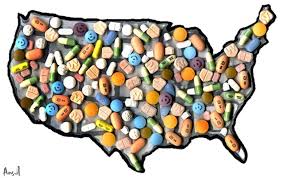[fusion_builder_container hundred_percent=”no” equal_height_columns=”no” menu_anchor=”” hide_on_mobile=”small-visibility,medium-visibility,large-visibility” class=”” id=”” background_color=”” background_image=”” background_position=”center center” background_repeat=”no-repeat” fade=”no” background_parallax=”none” parallax_speed=”0.3″ video_mp4=”” video_webm=”” video_ogv=”” video_url=”” video_aspect_ratio=”16:9″ video_loop=”yes” video_mute=”yes” overlay_color=”” video_preview_image=”” border_size=”” border_color=”” border_style=”solid” padding_top=”” padding_bottom=”” padding_left=”” padding_right=””][fusion_builder_row][fusion_builder_column type=”1_1″ layout=”1_1″ background_position=”left top” background_color=”” border_size=”” border_color=”” border_style=”solid” border_position=”all” spacing=”yes” background_image=”” background_repeat=”no-repeat” padding_top=”” padding_right=”” padding_bottom=”” padding_left=”” margin_top=”0px” margin_bottom=”0px” class=”” id=”” animation_type=”” animation_speed=”0.3″ animation_direction=”left” hide_on_mobile=”small-visibility,medium-visibility,large-visibility” center_content=”no” last=”no” min_height=”” hover_type=”none” link=””][fusion_text]
Opioid overdoses have become the leading cause of death of Americans under age 50, and researchers say social isolation, economic distress, and fraying human ties can increase the physical and emotional pain that drives opioid abuse.

The Harvard and Baylor researchers reported that data mined from all U.S. counties from 1999 to 2014 showed those with high social capital had the lowest rates of overdose deaths, while those with the lowest social capital had high rates of what they terms “deaths of despair:” 16 people in every 100,000 died of opioid overdoses.
In The Social Life of Opioids, in the Scientific American, author Maia Szalavitz, describes how the links between the human body’s naturally produced opioids are critical to nurturing the bonds between parents and children, between monogamous pairs, and social ties among people in communities. The story quotes Sarah Wakeman, an assistant professor at Harvard Medical School and director of the Substance Use Disorders Initiative at Massachusetts General Hospital as saying “It will be hard to address the addiction and overdose crisis without better understanding and addressing the neurobiology linking opioid, pain an social connectedness.”
The late neuroscience pioneer Jaak Panskepp years ago observed the similarities between maternal love and heroin addiction. In both cases, the story explains, an animal would persist in a behavior, despite negative consequences, to gain comfort from the mother or the drug. Recent research has shown that the hormone oxytocin, often associated with labor and nursing, is crucial to pair bonding. The feeling of warmth, calmness and peacefulness that socially bonded people get when feeling nurtured comes from a natural combination of opioid and oxytocin, researchers say, and it’s also the feeling people report when they have taken opioids. Research has also shown that the presence or touch of a partner can reduce pain, and the absence of a loved-one, or a threat to the relationship, increases stress and pain.
A study last year found that people to whom an opioid blocker Naltrexone had been administered experienced decreased levels of social connectedness. Naltrexone is a medication used to manage alcohol and opioid dependence. “Understanding the biology and commonalities between trusting social relationships and the opioid system can change the way we think about treatment,” said Larry Young, professor of psychiatry at Emory University, who added that punishments don’t work. “In essence,” the story concludes, “if we want to have less opioid use, we hay have to figure out how to have more love.”
[/fusion_text][/fusion_builder_column][/fusion_builder_row][/fusion_builder_container]

Leave A Comment
You must be logged in to post a comment.